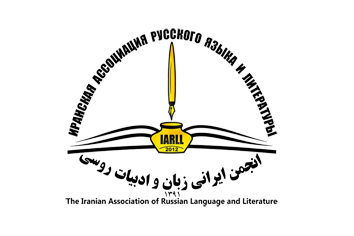THE IMAGE OF THE EAST IN THE EMBASSY DISCOURSE (INTRODUCTION TO THE TOPIC)
DOI:
https://doi.org/10.61186/iarll.20.97Keywords:
Oriental Text, Ambassadorial Discourse, Diplomatic Documents, Documentary Genres, Russian-Iranian RelationsAbstract
The article considers a layer of literature that has value as a primary source of information about the East, incl. about Persia, which is practically not studied. These are diplomatic documents, the texts of which have so far been considered precisely as documents from a historical point of view in the writings of historians. From the author's point of view, these documents can be considered in the context of the Eastern text of Russian literature. They represent a thematic unity, as they are based on general mythology and image of the East, general material descriptions. The author introduces the concept of embassy discourse to determine the literary function of such texts. The material of the study is the texts of participants in diplomatic missions, which represent a specific description of the East, motivated by the professional interests of the authors. The article analyzes a specific document of the embassy discourse – "Day notes on the journey of the Russian imperial embassy in Persia in 1816 and 1817, conducted by the adviser of this embassy A. E. Sokolov." It is established that special elements of narration were formed in A. E. Sokolov's "Day Notes" to convey the constants of the embassy text: natural descriptions, descriptions of social and cultural space, author's comments, ways of mastering foreign names and words.
Extended abstract:
The article considers a layer of literature that has value as a primary source of information about the East, incl. about Persia, which is practically not studied. These are diplomatic documents which have so far been considered precisely from a historical point of view in the writings of historians.
The purpose of the article is to examine diplomatic documents reflecting the relations between Russia and Persia as examples of documental and publicistic prose of the “eastern text” of Russian literature.
The research is based on texts of the participants of diplomatic missions. Those texts give descriptions of the East motivated by the professional interests of their authors.
To determine the literary function of such texts, the author introduces the concept of “ambassadorial discourse”. Here the ambassadorial discourse appears for the first time as an object of system scientific description. It is considered as a unity which has practical (professional), scientific, esthetical and mental values. Such texts contain unique details never mentioned in other writings. On the one hand, these texts are official documents, but on the other, they have the authorship and therefore the narrative elements of the text. Narrative elements, in their turn, allow us to consider the texts of the ambassadorial discourse as publicistic.
The texts of the ambassadorial discourse are thematically united on the basis of common mythology and image of the East, common destinations of different material, social and cultural space and common ways of their description.
The article analyzes a specific document of the ambassadorial discourse – "Day notes on the journey of the Russian imperial embassy in Persia in 1816 and 1817, conducted by the adviser of this embassy, A. E. Sokolov."
The following methods of text analysis in ambassadorial discourse are proposed: elements of method narration (e.g. verbal mapping of nature), descriptions of Eastern social stratification and kinship system, description of Eastern embassy ceremony.
It is established that special elements of narration were formed in A. E. Sokolov's "Day Notes" to convey the constants of the ambassadorial text: natural descriptions, descriptions of social and cultural space, author's comments, ways of mastering foreign names and words. The author’s personality here serves as a source of narration. The author is free to choose the objects and the means of describing the embassy ceremonials. The author’s personality in the ambassadorial text is shown in the following.
New space in “Day Notes” is documented with abundant toponymy of researched space, a culture of toponymic nomination is formed. Sokolov, in “Day Notes”, meticulously documents social space and social stratification reflected in the complex and extensive hierarchy of eastern state positions.
It is proved in the article that the embassy ceremony is the core of ambassadorial discourse. The ceremony includes embassy rituals of meeting the ambassador, accompanying him, entertaining, giving treatments and gifts, and these significant elements give the author an opportunity to understand the eastern mentality.
Downloads
Published
How to Cite
Issue
Section
License
Copyright (c) 2022 Issledovatel'skiy Zhurnal Russkogo Yazyka i Literatury

This work is licensed under a Creative Commons Attribution 4.0 International License.
![]()
"Creative Commons Attribution 4.0 International (CC-BY 4.0)"


